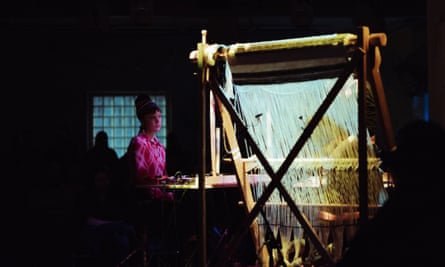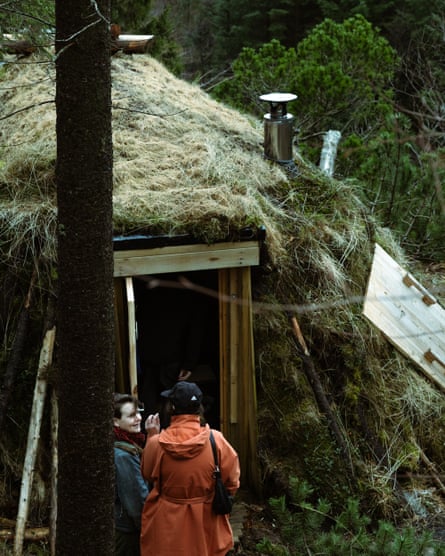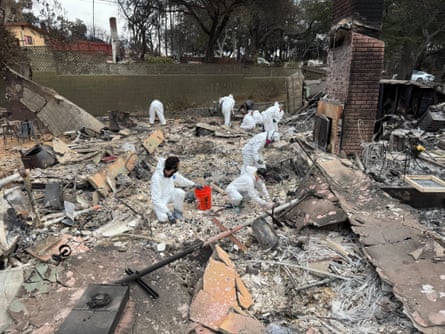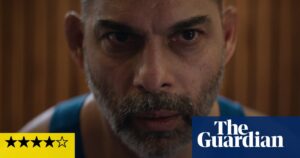On stage in a former industrial building in the Norwegian city of Bergen sits a strange, if not bewildering, selection of objects. There is an upright, warp-weighted loom, one of the most ancient and basic forms of human technology, with a weaving in progress on its frame. There is a kettle, a heating element, and an old-fashioned hand-cranked coffee grinder. There is something that looks like a miniature upside-down table – in fact it is a warping board, the structure on which the vertical threads of a future textile are organised before being fitted to the loom. The only real hint that this is the prelude to a concert is the presence of a looper and some microphones, abrupt visitors from the 21st century.
This is the set-up for a new work by composer Elina Waage Mikalson, artist-in-residence and co-programmer of Borealis. Well-established as an annual festival exploring the outer reaches of music and sound, this year’s event has been focused, for the first time, on experimental music made by Sámi artists – creators from Europe’s only Indigenous nation, Sápmi, which spans the modern borders of northern Norway, Sweden, Finland and Russia’s Kola peninsula. It is not just a first for the festival. The event also represents the first formal gathering of Sámi experimental musicians: a chance to consider how endangered traditional forms of cultural expression can be enriched and renewed – or, possibly, diluted and imperilled – by innovation.
Three young people come to the stage, all wearing elements of traditional Sámi attire. Mikalson sits down in front of the warping board, between whose uprights guitar strings have been stretched. Poet and musician Jalvvi Niillas Holmberg settles beside the kettle and coffee grinder. Márjá Karlsen stands at the loom and begins to weave, pushing a skein of wool through the shed before adjusting the horizontal wooden heddle, which, amplified, resonates with a percussive clank as she settles it back into its place. At the same time the loom weights – pieces of stone tied to the bottom of the warp threads to keep them taut – rattle and reverberate, similarly amplified. Finally, she brushes her fingers through the soft woollen warp threads, as if they were harp strings.

Against this repetitive loom-rhythm, electronic sounds grow and loop. Holmberg sets the kettle on the element with a tap, and, with a gravelly rasp of metal against bean, begins to grind coffee. After the kettle boils and the coffee is made, its aroma fills the air and there’s a moment of relaxed tension as Karlsen pauses to drink. Holmberg speaks improvised poetry, but his words arc into song, and Mikalson sings too, if you can call it song, a repeated note that sounds something like a goose’s high call, and everything seems to be circular – the to-and-fro motion of the weaving, the circular action of the coffee grinder’s handle, the lip of the coffee cup, the looped strains of voices, even Mikalson’s body, which sways back and forth as the music becomes more frantic and hypnotic.
Mikalson’s forebears would recognise nearly everything on this stage, from the weaving, or rátnu, a traditional practice that her own grandmother did much to preserve and revive, to the cups, traditionally crafted from birch burrs. Nevertheless, with its resonating loom and aromas of coffee, Stáinnarbánit – Wolffish Teeth, as the work is titled (named for the pattern inscribed into the cloth), is clearly stretching the possibilities of sound and performance – and raises the kind of question that this festival has been designed to bring to the fore. Can traditions that have had to be preserved against the odds be played with without loss?
That culture includes the Sámi languages, once much more numerous than the nine that are still spoken; the livelihood of reindeer herding; the act of handcrafting symbolically decorated artworks known as duodji; and most crucially in a musical context, the yoik, the haunting, improvisational vocal technique and form that is key to Sámi identity and expression, and that Holmberg employs in Mikalson’s piece. “Yoiking is not only a musical language, it’s a spiritual language, a means of telling stories and a way keeping memories alive,” as another Sámi musician, Viktor Bomstad, explains a couple of days after the performance of Wolffish Teeth. When a yoiker yoiks about a person, a place or a creature, it’s not so much about representing that person, place or creature, but embodying it, he says. “I like to use the word manifestation.”
As the festival unfolds, it becomes clear that there are no clear answers, or rather, there are plenty of possible answers, especially in a historical and political context in which the Sámi people have for centuries been at the sharp end of forced assimilation. In Norway, using Sámi languages in schools was legalised only in the late 1960s; in 1997, the king of Norway apologised for centuries of oppression visited on the Sámi people by the Nordic colonisers. Sápmi has long been exploited by nation states for their own extractive ends – whether for nickel mining in Russia, timber in Finland or, increasingly, the building of windfarms on traditional reindeer herding lands in Norway, which is highly disruptive to the animals, affecting their migratory patterns. (There is ongoing controversy about Fosen windfarm, the building of which was challenged by the Sámi and declared illegal by the Norwegian supreme court; a number of young Sámi activists are currently standing trial for their part in protests against the windfarm.)
after newsletter promotion

A consequence of all this is that many younger Sámi people find themselves rediscovering the culture of their grandparents or great-grandparents, at times actively relearning languages that their parents cannot speak, and seeking out knowledge of practices that they have not necessarily imbibed growing up. Blomstad, for example, came to his Sámi musical roots through his enthusiasm for a band called Intrigue, who combine elements of yoik with heavy metal. The last yoikers in his family, he says were in the 19th century; he relearned the art himself, first on his own, practising in the shower, then through mentorship under seasoned yoikers. For Borealis, he made a work combining electronics, noise, guitar, yoiking and objects such as reindeer bells for an audience who listened as they bobbed about in Bergen’s outdoor sea-swimming pool.
That was not the festival’s only unusual venue. Borealis also brought audience members a piece by Sámi artist Margrethe Pettersen designed to be heard in the mountains above the city in a beautiful goahti, a remaking of a traditional Sámi temporary dwelling place. (In this case the structure was fashioned specifically as a place for listening – it is named jiennagoahti – the “listening goahti” – and contains a solar-powered speaker system.) Her subaqueous work is built from recordings of salmon captured with a hydrophone. I listened to it lying down on reindeer skins, as I did to another sound piece, this time in a Bergen art gallery, by Ánndaris Rimpi. Rimpi’s piece is constructed from field recordings: a tapestry of the sounds of reindeer, mosquitoes, and the rivers of the north, but also some sonic material gathered from urban southern Sweden. At the same time, his love of western synthpop bands such as Kraftwerk is very present in the piece.
Asked by a fellow Sámi musician at a festival talk what makes the work specifically Sámi, Rimpi replies: “It’s Sámi music because I’m Sámi and I am the product of Sámi culture.” Pressed further, he talks about the way Sámi spirituality affects how he thinks of the nature of sound. “In the Christian tradition man is lord of the Earth. In Sámi culture we are part of the Earth. I see sounds from nature as subjects, not objects – as things that are saying something, communicating something to us. I want to sharpen our listening to hear what nature is actually saying to us, as a subject.”
Such things are subtle, perhaps not always detectable to a non-Sámi audience; but as the festival went on, I found myself reflecting on this talk of the Sámi way of listening, and tried to sharpen my listening, too – “travelling with the music,” as Rimpi said he hoped audiences would be encouraged to do. Mikalson, for her part, is frank in suggesting, when we speak, that not every ingredient in her piece Wolffish Teeth can, or should, reveal itself to a non-Sámi, western audience.
What is clear, though, is that however exploratory her music seems on the surface, in its spiralling, circular form and structure it is deeply connected on a metaphorical level to Sámi cosmology and spirituality. For the Sámi, she explains, the circle is present in everything from the shape of the goahti, to a concept of time that collapses past, present and future, to the understanding of an act as not singular, but as something that also contains “the full consequences and full lifespan of that action”. Nevertheless, despite the playful adventurousness of her piece, when asked if yoiking should be preserved in its most fundamental, traditional form, she is absolutely clear. “Yes, is the short answer,” she says. “It is the core of who we are, and we absolutely need it, to know who we are.”
Source: theguardian.com





















